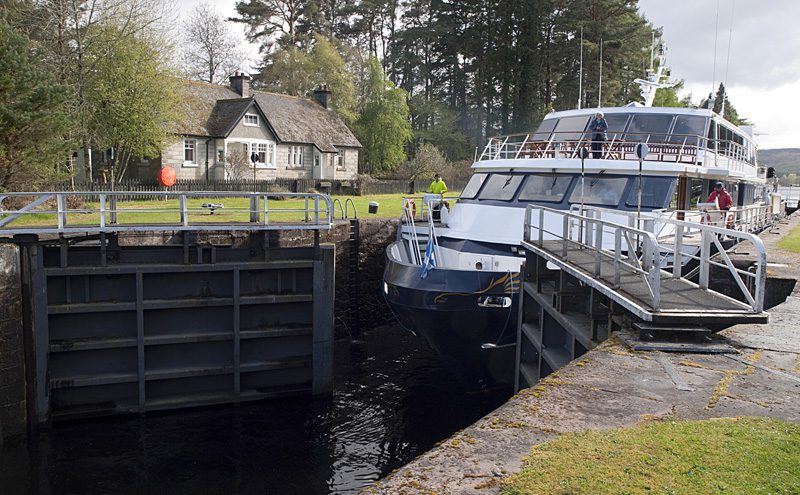
ECS Engineering Services has been awarded a contract by Scottish Canals, to carry out the replacement of four lock gates at Kytra Lock on the Caledonian Canal. One of the most naturally appealing stops along this stretch of water, the work at Kytra constitutes part of a systematic replacement of infrastructure along waterways in Scotland.
Scottish Canals, part of The British Waterways Board, manage five major canals in Scotland: the Caledonian, Crinan, Monkland, Union and the Forth & Clyde. The organisation has recently completed an audit of all the facilities it operates on these waterways, and came up with a programme for the replacement of aging equipment over the next few years. The work at Kytra has been prioritised due to the age of its lock gates, with ECS being chosen to conduct the gate replacement in an efficient and cost-effective manner.
As a popular tourist spot steeped in heritage, preserving the environment and minimising disruption around Kytra was a major concern for Scottish Canals. ECS’ experience conducting projects for the Environment Agency, water boards and other government institutions provided evidence of its ability to deliver projects in environmentally sensitive settings.
Jamie Wesley, Contracts Manager at ECS commented: “We are delighted to be awarded another contract from a highly respected authority; we hope that we can build on this award to further develop our relationship with Scottish Canals over the coming months. We were able to submit two solutions for this project, one based on traditional style steel lock gates and an alternative using gates made from fibre reinforced polymer (FRP). We always offer our clients a choice of designs that have a number of advantages, including a near zero maintenance option.”
ECS will be required to fabricate the four leaf steel lock gates and install them on-site, incorporating project and subcontractor management. ECS will be joined by water control experts KGAL, who will conduct surveys of the site before work commences. The design of the gates will be in accordance with the Historic Environmental Scotland Ancient Monument consent, requiring the new installation to seamlessly integrate with its surroundings and closely resemble the previous installation.






